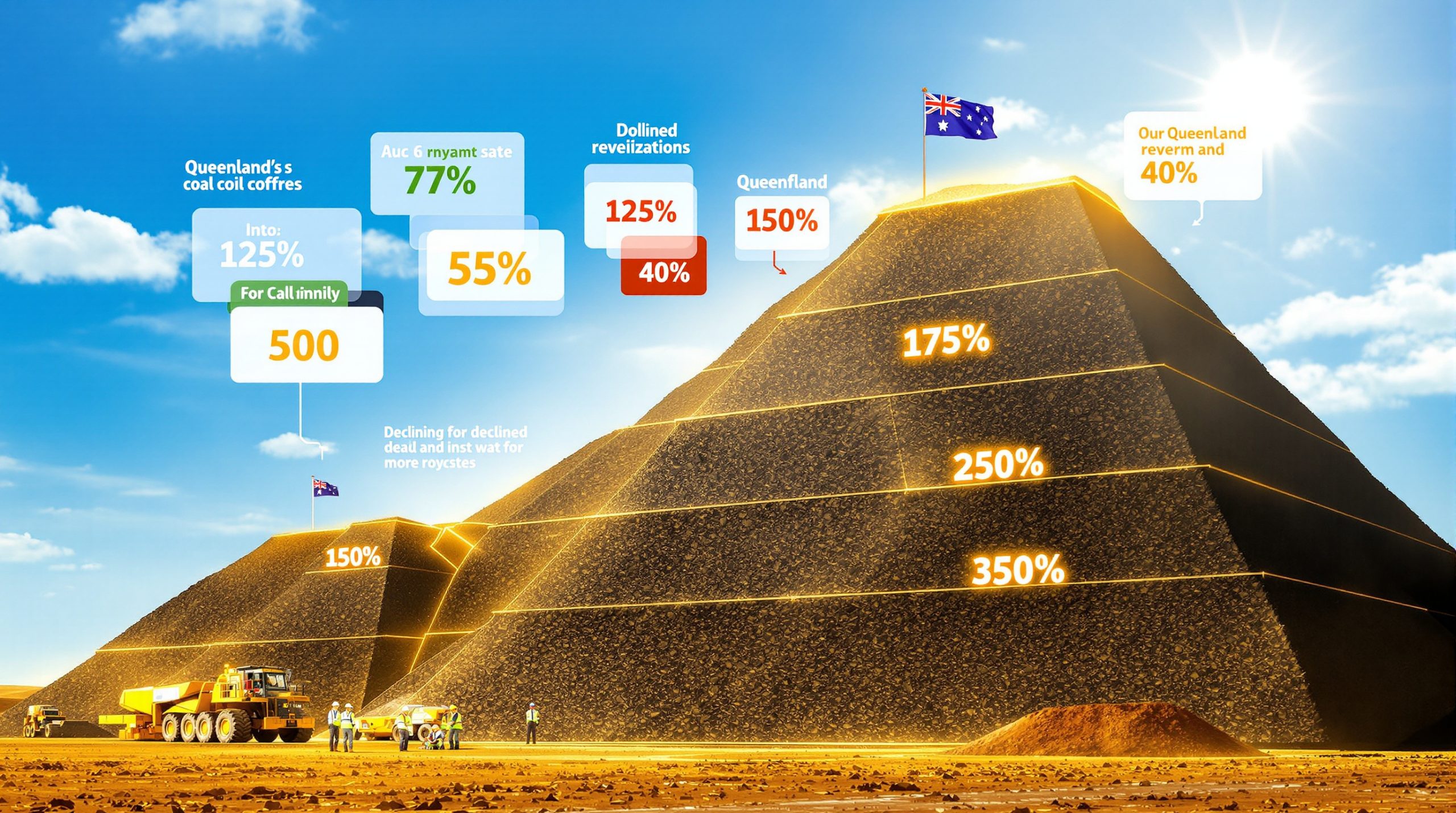How Are US Tariffs Affecting Fertilizer Shipments?
The impact of US tariffs on fertilizer imports has created significant disruptions in the agricultural supply chain, with phosphate deliveries experiencing the most substantial decline. According to Mosaic Co., one of the world's leading producers of crop fertilizers, phosphate shipments to the US are "tracking well below last year" as import levies now apply to most sources of this essential agricultural input.
The tariff situation has created a notable divide between different types of fertilizers. While phosphate imports face significant barriers, potash from Canada remains exempt under North American trade agreements, creating an uneven playing field in the fertilizer market. This dichotomy is reshaping how both domestic and international producers approach the US market.
Current Fertilizer Market Conditions
Recent market data shows phosphate deliveries to US markets substantially lower than previous years, creating ripple effects throughout the agricultural sector. The impact is clearly visible in financial results, with Mosaic reporting an $8 million loss in its phosphate segment during Q2 2025, highlighting the substantial financial implications of these trade policies.
The market disruption has been reflected in investor sentiment as well. Following their earnings announcement, Mosaic's shares slumped more than 6% after regular trading hours, demonstrating how tariffs impact investment in the sector.
Key market indicators reveal:
- Phosphate shipment volumes significantly below historical averages
- Most international sources of phosphate now subject to import levies
- North American potash maintaining market access through trade agreement exemptions
- Global markets absorbing volumes previously destined for US customers
- Quarterly losses in the phosphate segment reaching millions of dollars
Factors Compounding Fertilizer Market Challenges
While tariffs represent a significant challenge, several additional factors are exacerbating the situation for fertilizer producers and agricultural customers alike:
- Declining commodity prices for key crops like corn and soybeans
- Global trade uncertainties creating market hesitation
- Projections of large harvests putting downward pressure on agricultural prices
- Extensive maintenance costs impacting producer profitability
- Quarterly earnings for major producers falling below analyst expectations
The combination of these factors has created a perfect storm for the fertilizer industry, with tariffs on Canadian industries acting as both a cause and amplifier of market disruptions.
Why Are US Farmers Reducing Fertilizer Purchases?
The decline in fertilizer shipments cannot be attributed solely to tariff policies. American farmers are facing multiple economic pressures that are fundamentally altering their purchasing decisions and input management strategies.
As agricultural commodity prices fall, farmers' available capital for crop inputs has decreased proportionally. This economic squeeze is forcing difficult decisions about which inputs can be reduced without catastrophically impacting yields, with fertilizer often becoming a target for cost-cutting.
Economic Pressures on Agricultural Producers
The financial reality for American farmers has become increasingly challenging:
- Corn and soybean prices are falling, significantly reducing available capital for inputs
- Global trade uncertainties are making long-term planning exceptionally difficult
- Anticipated large harvests are driving commodity prices even lower
- Rising input costs across multiple categories are squeezing already thin profit margins
- Deferred fertilizer purchases may create future nutrient deficiencies in agricultural soils
These economic realities create a difficult situation where farmers must balance immediate financial constraints against long-term soil productivity concerns. Many are choosing to reduce fertilizer applications in the short term, despite potential yield implications in future growing seasons.
Impact on Domestic Fertilizer Production
The ripple effects of reduced farmer purchasing have significantly impacted domestic fertilizer producers:
- Major producers like Mosaic are reporting substantial financial impacts from reduced shipments
- Second-quarter phosphate segment losses reached $8 million for Mosaic alone
- Maintenance costs are further straining producer profitability during a period of reduced sales
- Share prices have declined following disappointing quarterly results
- Companies are shifting marketing focus toward international markets unaffected by US economy under tariffs
This situation has created a challenging business environment for US fertilizer producers, who must balance maintaining production capacity against current market realities.
How Are Global Markets Responding to US Tariff Policies?
The global fertilizer market is undergoing significant realignment in response to US tariff policies. With reduced American import demand, international producers are adjusting export strategies and redirecting shipments to alternative markets.
According to Mosaic, "demand elsewhere in the world is absorbing some of the volumes no longer bound for the US," indicating a relatively resilient global market despite the disruption in traditional trade flows. This redistribution is creating both challenges and opportunities for different market participants.
International Market Adaptations
The global tariff impact has led to multifaceted responses:
- International markets are absorbing volumes previously destined for US customers
- China, as the world's largest phosphate producer, maintains significant market influence
- Canadian potash producers benefit from tariff exemptions under USMCA provisions
- Rising global prices are partially offsetting reduced US volumes for producers
- International producers are adjusting export strategies to target alternative markets
These adaptations demonstrate the flexibility of global supply chains, though the transition has not been without disruption for producers accustomed to serving the US market.
Price Trends Amid Changing Trade Patterns
An interesting market dynamic has emerged where fertilizer prices have shown resilience despite reduced US demand:
- Phosphate prices have risen despite the drop in US import volumes
- Potash price increases have been sufficient to boost net sales figures compared to prior years
- Price increases have partially compensated for volume reductions for major producers
- Market volatility has created planning challenges for both producers and agricultural customers
- Regional price disparities are emerging as markets adjust to new trade patterns
This price resilience suggests that global demand fundamentals remain strong despite disruptions in specific markets. According to market data, rising prices for both phosphate and potash boosted second-quarter net sales compared to the prior year for some producers, even with lower volumes.
What Is Mosaic's Financial Performance Amid Tariff Challenges?
As the world's leading producer of phosphate and potash fertilizers, Mosaic's financial results provide a critical window into how tariff policies are affecting the industry. The company's recent performance reveals both the challenges and adaptations occurring in response to changing market conditions.
Mosaic's Q2 2025 results showed significant impacts from current market disruptions, with sales volumes for both phosphate and potash trailing analyst estimates. Perhaps most concerning, earnings per share missed even the lowest analyst projections, triggering the aforementioned 6% share price decline.
Recent Financial Results
The numbers tell a clear story of market disruption:
- Q2 2025 phosphate segment posted an $8 million loss
- Sales volumes for both key product categories fell below market expectations
- Earnings per share missed consensus estimates by a significant margin
- Extensive maintenance costs further impacted quarterly performance
- Share price declined over 6% following the earnings release
These results demonstrate how US-China trade war impact can create substantial financial impacts that ripple throughout an entire industry, affecting not just sales volumes but profitability, investor confidence, and strategic planning.
Strategic Responses to Market Conditions
Despite current challenges, Mosaic is implementing several strategic adaptations to navigate the difficult market environment:
- Shifting focus toward markets unaffected by US tariff policies
- Leveraging potash sales exempt from tariff restrictions under trade agreements
- Maintaining an optimistic outlook for 2026 demand recovery
- Emphasizing the necessity of nutrient replenishment after reduced current applications
- Focusing on long-term market fundamentals rather than short-term disruptions
The company's perspective that "any demand deferral or reduction exiting 2025 sets the stage for strong demand in 2026, as nutrients removed from this year's crops need to be replenished" highlights their strategic outlook beyond current market disruptions.
How Might Current Fertilizer Usage Impact Future Agricultural Productivity?
The reduction in fertilizer applications occurring in 2025 could have significant implications for future agricultural productivity. This creates a complex situation where short-term economic decisions may lead to longer-term agricultural challenges.
The fundamental reality is that crops remove nutrients from soil, and those nutrients must eventually be replenished to maintain productivity. When farmers reduce fertilizer applications, they are essentially borrowing from future soil fertility, creating potential yield implications for subsequent growing seasons.
Projected Long-Term Market Impacts
Analysis of current application trends suggests several potential long-term impacts:
- Reduced 2025 fertilizer application will likely create cumulative nutrient deficiencies
- Soil fertility depletion may set the stage for stronger demand in 2026 and beyond
- Nutrients removed from current crops will eventually require replenishment
- Deferred fertilizer purchases may accumulate as future demand
- Cyclical market patterns suggest an eventual demand recovery is likely
These projections align with Mosaic's assessment that current demand reduction "sets the stage for strong demand in 2026," reflecting the fundamental agricultural reality that soil nutrients must be maintained for continued productivity.
Balancing Short-Term Challenges with Long-Term Outlook
The fertilizer industry's approach to current market disruptions reflects a balance between addressing immediate challenges while maintaining readiness for anticipated recovery:
- Market fundamentals remain positive despite current disruptions
- Nutrient replenishment needs create inevitable future demand
- Agricultural productivity depends on restoring optimal soil fertility
- Producers are positioning for anticipated market recovery
- Strategic planning focuses on weathering temporary market conditions
This balanced approach recognizes both the current reality of reduced demand and the biological necessity of fertilization for sustained agricultural productivity.
What Are the Broader Economic Implications of Fertilizer Tariffs?
The impact of fertilizer tariffs extends well beyond the immediate agricultural input sector. These trade policies create complex ripple effects through food production systems, international trade relationships, and commodity markets.
When essential agricultural inputs become more expensive or less available, the implications can eventually reach consumers through food production costs. While the current situation has not yet significantly impacted consumer prices, the potential exists if fertilizer application reductions lead to yield decreases or quality issues.
Economic Ripple Effects
The broader economic implications of current tariff policies include:
- Potential gradual increases in food production costs
- Shifting trade relationships between fertilizer-producing nations
- Impacts on agricultural commodity pricing and availability
- Changes in international market share among fertilizer producers
- Adjustments in global supply chain configurations to adapt to new trade realities
These effects demonstrate how seemingly targeted trade policies can create widespread economic impacts across multiple sectors and geographies.
Trade Policy Considerations
The current situation highlights several important trade policy dynamics:
- North American trade agreement exemptions create advantages for Canadian potash
- Different treatment of phosphate versus potash imports creates market distortions
- Global markets demonstrate adaptability to tariff barriers through redistribution
- Potential exists for retaliatory trade measures from affected exporting countries
- Long-term implications for international trade relationships remain uncertain
These considerations raise important questions about how targeted trade policies affect complex global supply chains and whether they achieve their intended objectives without creating unintended consequences.
FAQ: Understanding the US Fertilizer Market
What types of fertilizer are most affected by US tariffs?
Phosphate fertilizers are experiencing the most significant impact from US tariffs, with most international sources now subject to import levies. This has led to phosphate deliveries "tracking well below last year," according to Mosaic's recent reports. In contrast, potash fertilizers from Canada remain exempt under North American trade agreements, creating different market dynamics for these two essential crop nutrients.
How are fertilizer producers responding to reduced US demand?
Major producers are implementing multiple strategies to address reduced US demand:
- Redirecting shipments to international markets that can absorb volumes no longer destined for the US
- Emphasizing products exempt from tariffs, such as Canadian potash
- Maintaining production capacity in anticipation of eventual demand recovery
- Focusing on price optimization to maximize revenue from available sales opportunities
- Strategically managing maintenance schedules and costs to optimize profitability
These adaptations demonstrate the industry's resilience and ability to adjust to changing market conditions.
Will reduced fertilizer application affect food prices?
While the immediate impact on food prices may be limited, continued reduction in fertilizer application could eventually lead to lower crop yields and higher food production costs. However, this relationship depends on multiple factors including:
- Weather conditions during growing seasons
- Global harvest sizes across major agricultural regions
- Whether farmers selectively reduce fertilizer on less productive land
- The duration of reduced application patterns
- The resilience of specific crop varieties to nutrient limitations
The complex nature of global food systems means that direct impacts on consumer prices may take time to materialize and could be offset by other factors.
What factors might trigger a recovery in US fertilizer demand?
Several factors could drive recovery in the US fertilizer market:
- Depletion of soil nutrients requiring replenishment for yield maintenance
- Improved crop prices increasing farmer purchasing power
- Adjustment or removal of tariff policies affecting import availability
- Changes in global trade dynamics affecting fertilizer pricing and availability
- Weather events or other factors creating yield concerns that prioritize input optimization
The biological necessity of soil nutrient replacement suggests that current demand reduction is likely temporary rather than permanent, with timing of recovery dependent on these various factors.
Disclaimer: This article contains analysis of market trends and potential future developments based on current information. Agricultural markets are subject to numerous variables including weather, government policies, and global economic conditions. Readers should consider this analysis as educational rather than predictive, and consult with agricultural and financial advisors before making significant business decisions based on fertilizer market projections.
Ready to Spot the Next Major Mineral Discovery?
Discovery Alert's proprietary Discovery IQ model delivers real-time notifications on significant ASX mineral discoveries, instantly empowering subscribers to identify actionable opportunities ahead of the broader market. Understand why major mineral discoveries can lead to significant market returns by exploring Discovery Alert's dedicated discoveries page.




